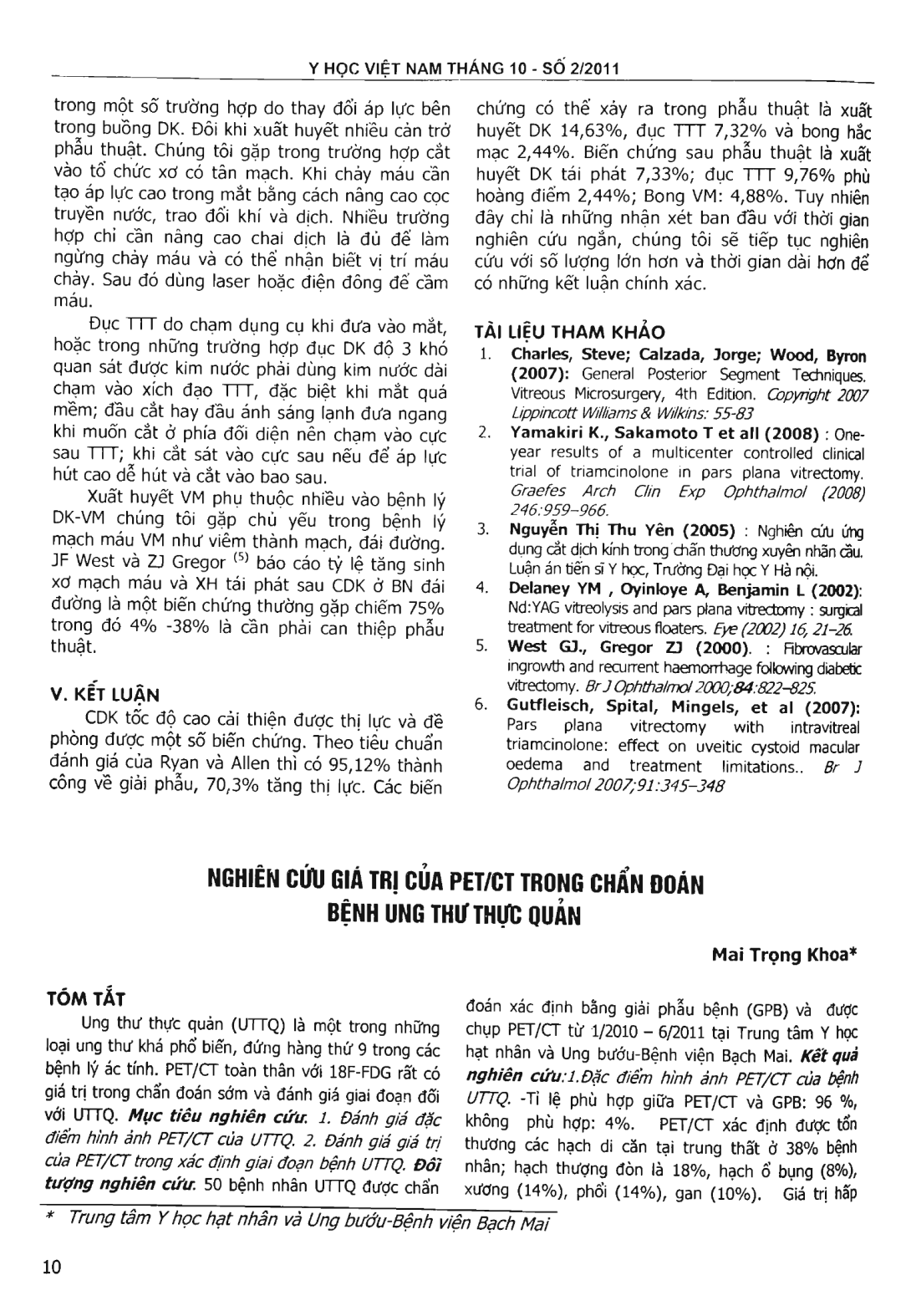
Background: Esophageal cancer is the eighth most common malignant worldwide. Wholebody PET/CT with 18F-FDG has a high benefit in early diagnosis and initial satging for esophageal cancers. Aims: To evaluate the characteristics of PET/CT images in esophageal cancer. To study the valuation of PET/CT in staging esophageal cancer. Patients: 50 esophageal cancer patients (confirmed by histopathology) have been underwent PET/CT from January 2010 to June 2011 at the Nuclear Medicine and Oncology Center, Bach Mai hospital. Results: 1. Characteristics of esophageal cancer in PET/CT images: Matches rate between PET/CT and histopathology: 96 percent, unmatches: 4 percent. PET/CT revealed involved lymph nodes and metastases in mediastinum (38 percent), supraclavicular (18 percent), abdoment (8 percent), bone (14 percent), lung (14 percent), liver (10 percent). Relevant average max SUV are 9,5; 8,02; 6,42; 6,8; 9,27; 4,08; 9,72; respectively. Avarage max SUV increases in corelated with size of the tumor: 5,24 (size :2cm); 7,25 (size:2-4cm); 10,32 (size: 4-8cm); 15,17 (tumor Bem). 2. Valuation of PET/CT in staging esophageal cancer: Clinical staging before PET/CT: stage I (12 percent); stage II (28 percent); stage III (42 percent); stage IV (18 percent). After PET/CT performance: rate of patients in stage IV has increased to 40 percent, so that the patients in stage I, II, III decreased to 8 percent, 16 percent, 36 percent, respectively. PET/CT results have upstaged 14/50 patients (28 percent). Conclusions: PET/CT has a valuable role in early diagnosis and staging in esophageal cancer. It has changed stage in 28 percent patients. PET/CT helps selecting the most appropriate, accurate and benefitial approach in management esophageal cancer individually.
- Đăng nhập để gửi ý kiến
